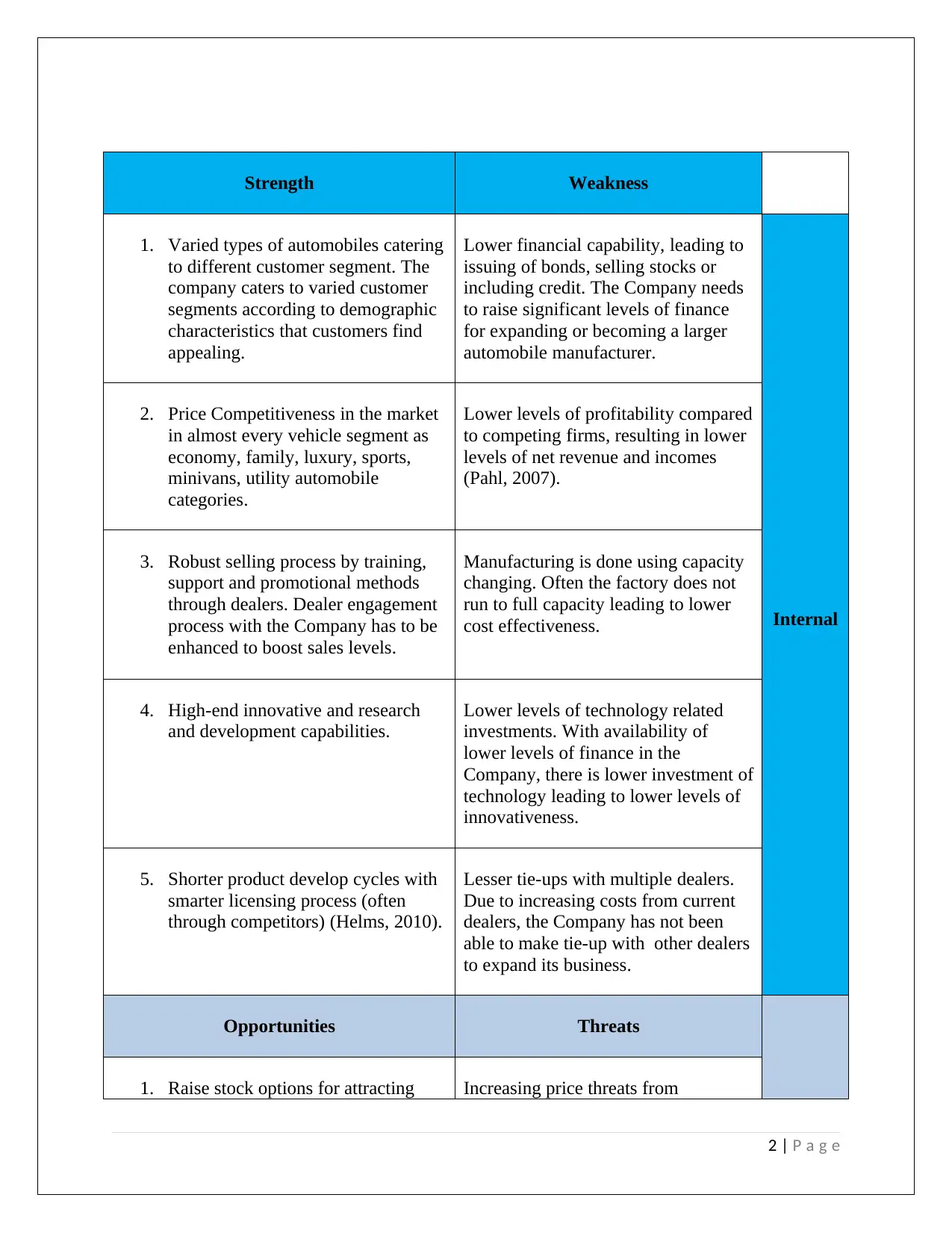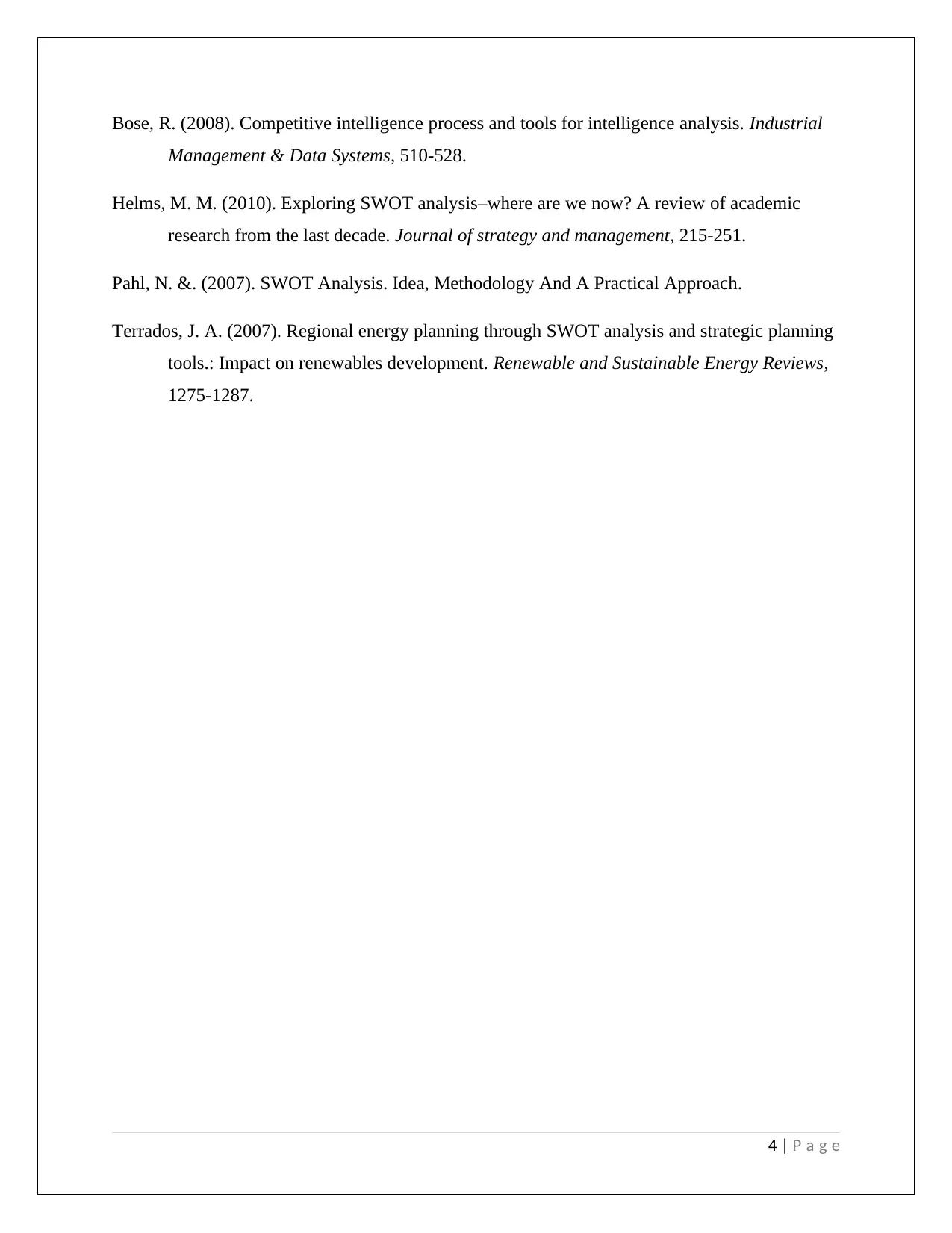Case Study: SWOT Analysis, Market Segments in StratSim Marketing
VerifiedAdded on 2023/06/15
|4
|682
|317
Case Study
AI Summary
This StratSim marketing case study presents a SWOT analysis for a firm operating in a simulated automobile industry, identifying strengths like diverse product offerings and price competitiveness, weaknesses such as lower profitability and technology investment, opportunities including raising stock options and cost reduction through outsourcing, and threats like rising crude oil costs and competition from hybrid technologies. The analysis also discusses market segments, competitive dynamics, and strategic options for the firm, such as financing investments and measuring success. The case study emphasizes the importance of a market-oriented strategy for achieving objectives like market leadership or maximizing shareholder return. Desklib is a platform where you can find past papers and solved assignments for students.
1 out of 4








![[object Object]](/_next/static/media/star-bottom.7253800d.svg)